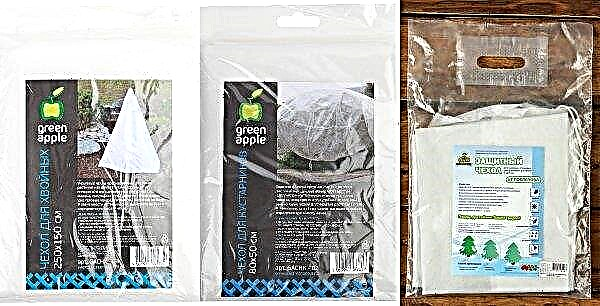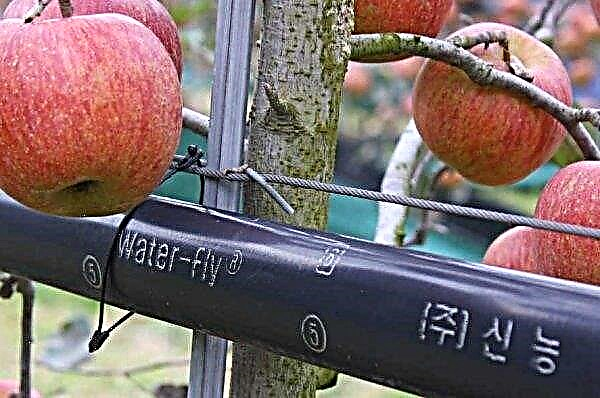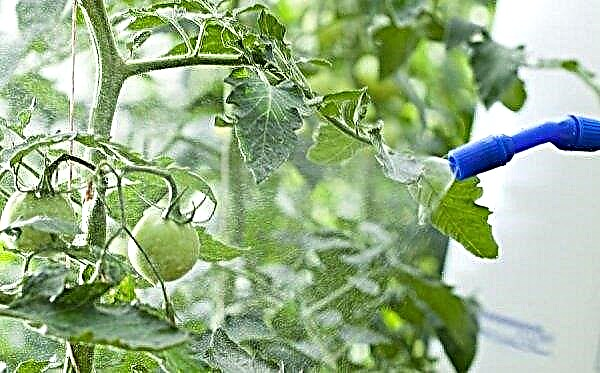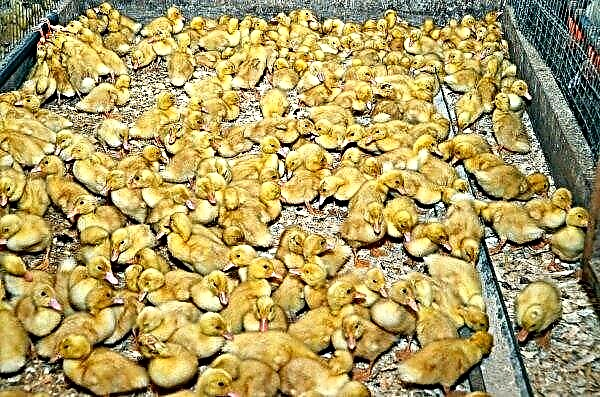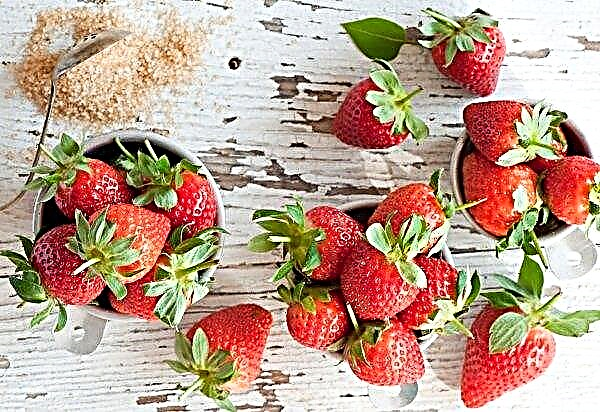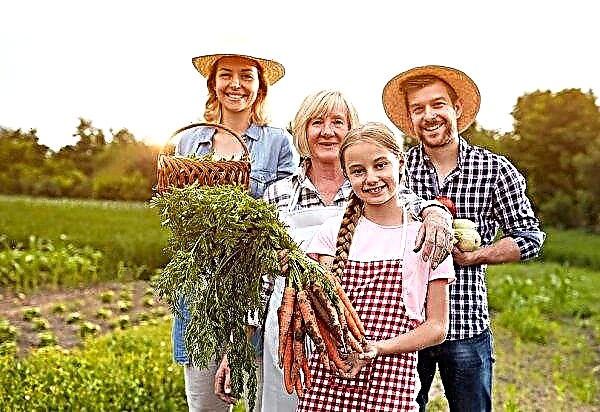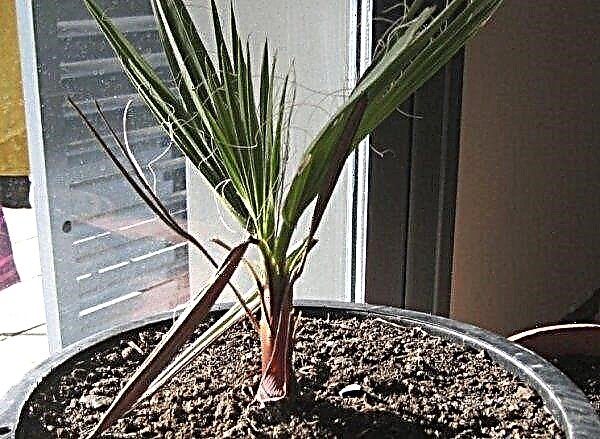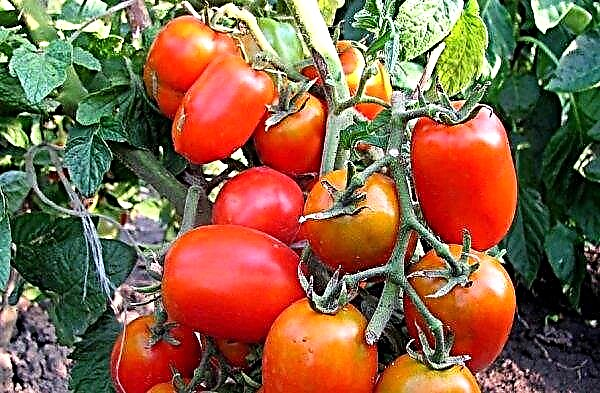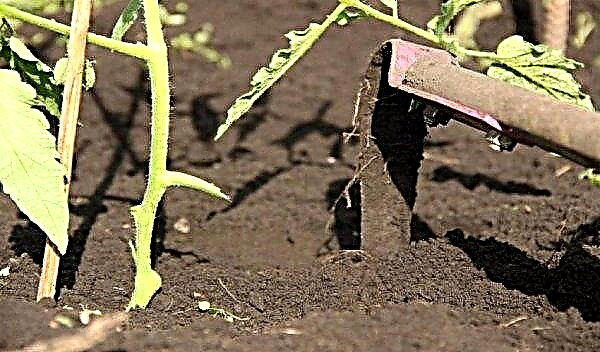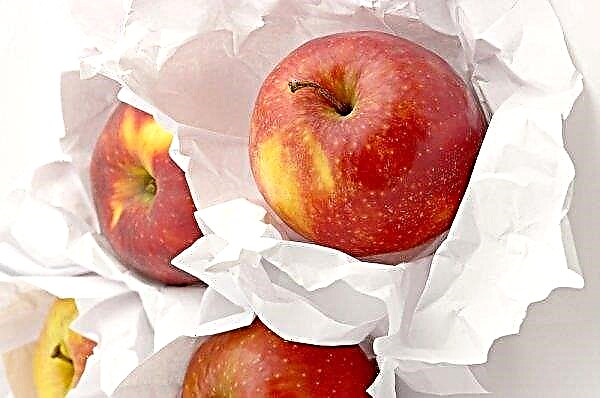Each gardener spends a lot of time and effort on growing, and then on harvesting potatoes. A big disappointment is the fact that the discovery that vegetable stocks begin to deteriorate for an unknown reason. Even more disappointing is the fact that a carefully prepared dish suddenly begins to change its color to a very unappetizing one. Why this happens, we will try to understand our article.
Main reasons
There are many reasons for the darkening of potatoes, and having noticed such changes, it is difficult to determine exactly why it all happened. Consider all possible options for this phenomenon.
After cleaning
Changing the color of potatoes after peeling is a natural occurrence, and you don’t need to be afraid of it. The thing is that tubers contain chemical compounds - polyphenols - which, when reacted with oxygen, begin to oxidize. A long chain of chemical reactions is launched. It arises because phenolic substances are contained in cellular juice, and enzymes in the cytoplasm. In the normal state, they do not interact with each other, because they are separated from each other.
Important! Different varieties of potatoes change their color after cleaning at different speeds, because they contain different numbers of polyphenols. The color change environment is also affected by the culture medium (soil, climatic conditions).
When you peel potatoes, then mechanically destroy the septum that separates enzymes from phenolic substances, and they mix. This mixture is in the air and forms dark colored compounds. When frying, the same processes occur as described above. In addition, under the influence of temperature, a reaction is launched between the iron and chlorogenic acid contained in the tubers. To prevent this from happening, you need to create an acidic environment in the dishes where the cooking process is going. Often the color change also depends on an excess of nitrogen in the soil that has accumulated inside the tubers. Its excess accumulates under the peel, therefore, to avoid discoloration, it is advisable to soak the peeled vegetable thoroughly in water before cooking, for 2–4 hours.
To prevent this from happening, you need to create an acidic environment in the dishes where the cooking process is going. Often the color change also depends on an excess of nitrogen in the soil that has accumulated inside the tubers. Its excess accumulates under the peel, therefore, to avoid discoloration, it is advisable to soak the peeled vegetable thoroughly in water before cooking, for 2–4 hours.
During storage
Not only the duration of its storage, but also the quality will depend on how the storage conditions of the crop are met. Some of the mistakes made during the storage of the vegetable lead to the fact that the crop grown according to all the rules quickly loses its keeping quality and changes color after cleaning.
Adverse conditions
The optimal storage conditions for potatoes are + 2 ... + 6 ° С, air humidity - 80–90% and good ventilation of the room. Changes in one direction or another of these indicators reduce the shelf life of tubers and provoke the development of various diseases.
Important! If the temperature in the room where the potatoes are stored is within 0...+ 1 ° C, then its flesh acquires a sweet taste and darkens. At a temperature in the range of + 7 ... + 12 ° С, the tubers soften, sprout, and the flesh becomes stained.
So, poor ventilation of the room becomes the reason that the vegetable begins to chatter. Negatively displayed on keeping quality and sharp temperature jumps. This provokes an increase in humidity and, as a result, the vegetable spoils.
Harvest mechanical damage
Potatoes are usually harvested with a shovel or special equipment, which can cause minor damage to the vegetable. Usually these are light incisions. It takes weeks to “heal” them. If certain conditions are not created for this time (the tubers are dried after being removed from the ground and kept in a cool ventilated place), the potatoes will quickly deteriorate, because any bacteria can easily get into the “wounds”.
If the damage site can be delayed, and the peel has time to ripen, then the crop will be stored without problems. The “injuries” received during the cleaning process can be “healed”, but it is more difficult to prevent the appearance of defects during transportation and packaging. They are also a good environment for the development of gray spotting.
Infectious diseases
The most common crop damage diseases are:
- Blackleg. Infectious disease that spreads from a diseased tuber to a healthy one. This happens even after harvesting. The affected fetus begins to blacken from the inside, exuding a putrid odor. Such tubers are no longer suitable for food.

- Melanosis. Most often occurs due to mechanical damage to the vegetable. It spreads from the inside and does not appear on the outer side of the tuber, but, unlike the previous case, potatoes affected by melanosis are suitable for consumption. To stop the spread of stains, vinegar with citric acid is added to the water when cooking. To prevent the appearance of adversity, storing potatoes interspersed with beets will help.

- Late blight. This misfortune can be found even at the stage of growth of the culture, that is, it affects the foliage. With timely measures, there is a chance to save the crop.

Improper storage
In order for potatoes to be stored for a long time, some rules must be observed. First of all, these are the storage conditions described above. You must also choose the right variety for long-term storage. So, early ripe varieties are absolutely unsuitable for prolonged laying. They need to have time to eat before the beginning of autumn, otherwise they will begin to deteriorate quickly. But mid-ripening and late-ripening varieties lie well until spring.
Important! Varieties with a high starch content most often suffer from gray spotting, which causes darkening of the pulp.
Incorrect fertilizer application during cultivation
If the soil in which the vegetable grew had a deficiency of potassium, then even with all storage rules, the appearance of blackness cannot be avoided. It is better not to stock up on such a vegetable for the future, that is, it is unlikely that it will be able to lie down even before winter. An excess of nitrogen in the soil is also negatively perceived by the culture, which is often due to the abuse of organic fertilizers, for example, manure.
Late cleaning
When harvesting late varieties, it should be borne in mind that the technical maturity of the tuber at the time of harvest should be 100-130 days. During this time, a thick peel forms in root crops, protecting it from damage and disease. If the tubers lie in warm land, they can mate. In the case of harvesting after the frost has occurred, the tubers may be frozen, and when they get into a relatively warm room, they will begin to rot quickly.
What to do and how to solve the problem of darkening
If changes in the appearance of the crop are detected, urgent measures must be taken to save it. First of all, you need to sort through all the stocks and remove the spoiled tubers.
Did you know? More than 400 years ago, the Spanish priest and historian Pedro Cieza de Leon, as a teenager, secretly got on the ship of the Spanish conquistadors, leaving for Peru. While soldiers in search of gold plundered and destroyed the property of local residents, the young man carefully studied the life of the population and wrote down everything. In 1553, he published the book The Chronicle of Peru, where, among other things, the first description of potatoes was given, as well as the method of its storage and preparation.
Further, you can use the following solutions to the problem:
- Arrange vegetables in wooden crates and place them in a cool, ventilated area, if before that they were stored in heat or other containers.
- Boxes or bags of potatoes should be placed in the cellar at a height of 20 cm from the floor and at the same distance from the walls. You can not raise the crop, but simply put it on wooden pallets.
- Separate potatoes from other vegetablesexcept beets. With it, you can store it interspersed.

Is it possible to cook and eat potatoes that have turned black
If the potato changed its color during cooking, then there is nothing wrong with that. You can eat the dish, and the next time before you cook the vegetable, soak it peeled in water. When cooking, add a few bay leaves to the pan. All you need to fear is the potato that has changed color in a matter of minutes. This indicates that there is a lot of nitrogen in the root crop, which will not affect health very well.
Did you know? The amount of sugar contained in a potato may vary depending on the storage conditions of the vegetable. So, at + 10 ° C in 1 kg of tubers 35.8 mg of sugar is accumulated and the same amount is consumed. At a higher temperature, consumption exceeds accumulation, and at low temperature, accumulation is observed to a certain level, and then stops.
If a spoiled crop with signs of rot is found, it is better to throw such fruits away. Black spots of other origin can be trimmed and used tubers for their intended purpose. As you can see, there are many reasons for the color change of potatoes during storage and preparation. It is not always possible to correct this rather frequent phenomenon, but to prevent it is within the power of everyone.




